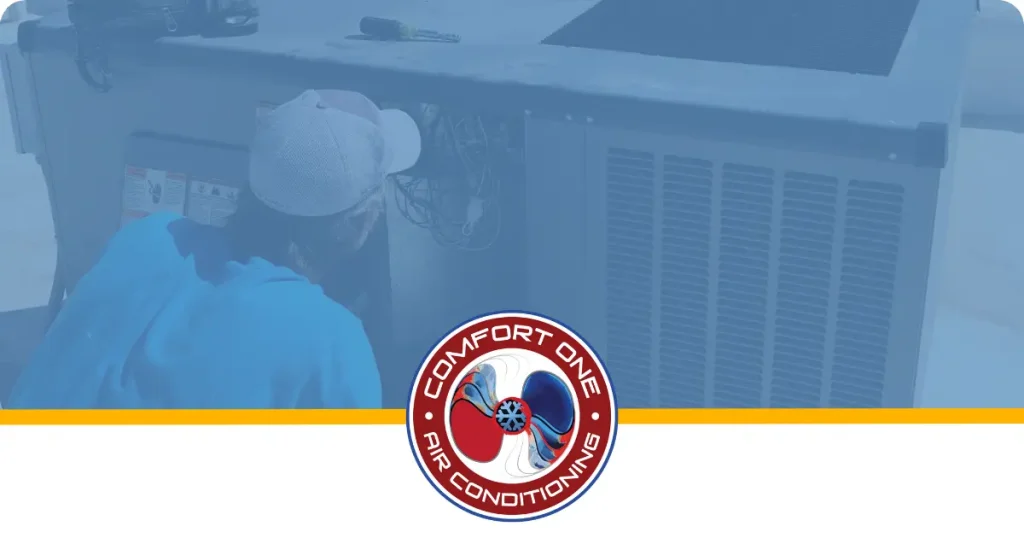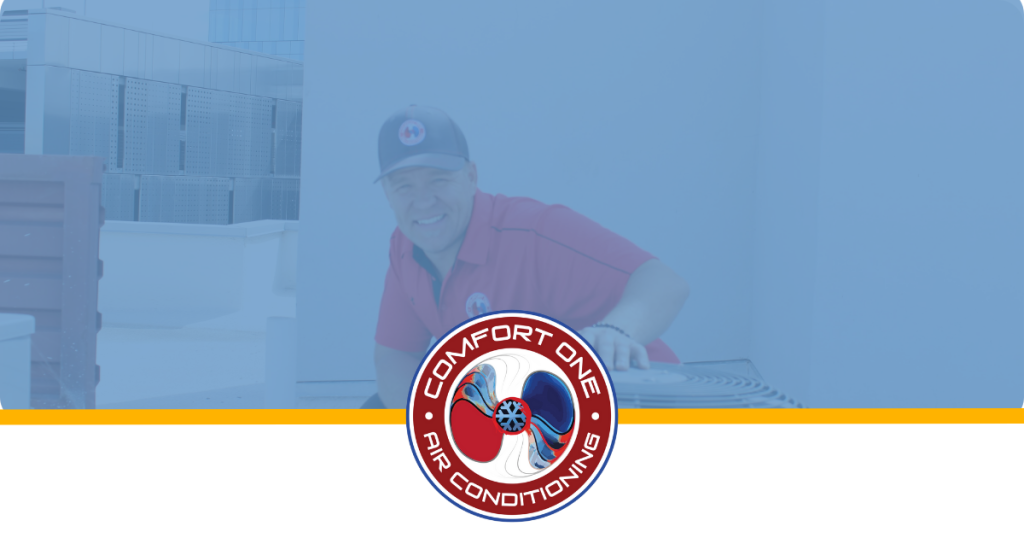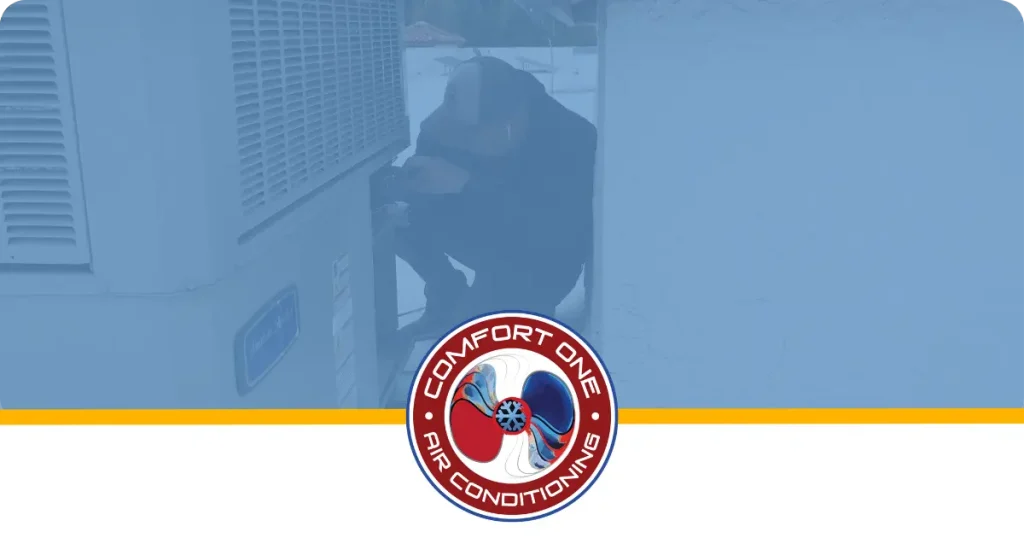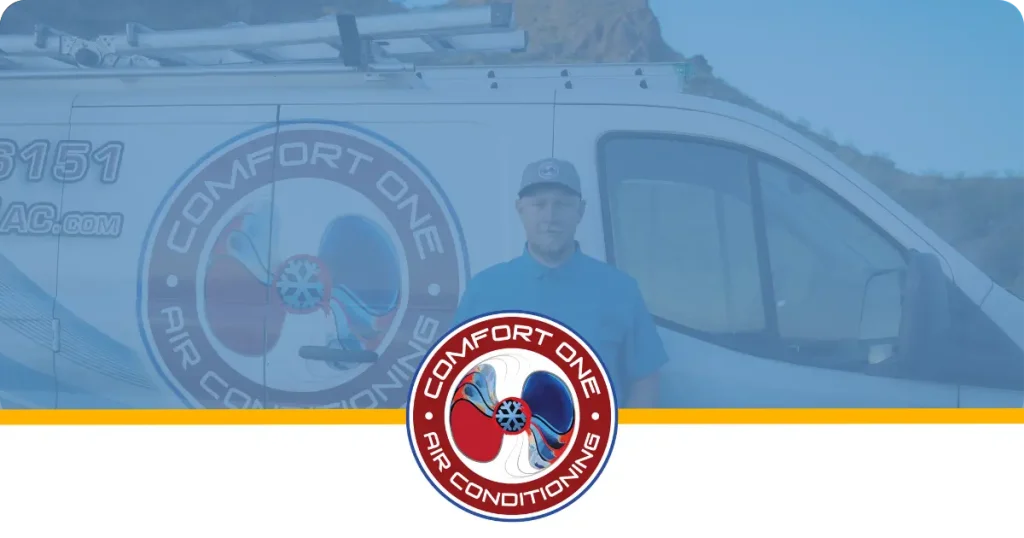When your air conditioner suddenly stops working on the hottest day of summer, panic sets in quickly. The good news? Over 80% of AC breakdowns stem from preventable issues that homeowners can often identify and fix themselves before calling for professional help. Understanding the common culprits behind air conditioning system failures and knowing when to attempt DIY fixes versus when to call an HVAC professional can save you time, money, and uncomfortable hours without cool air.
This comprehensive troubleshooting guide will walk you through the immediate steps to take when your AC stops working. We’ll also cover the possible causes of AC failure, helping you pinpoint what might be wrong with your system. Continue reading for more detail on troubleshooting and solutions you can try before seeking professional help.
Key Takeaways
-
Check thermostat settings, air filter, and circuit breaker before calling a professional
-
Dirty air filters and blocked outdoor units are the most common causes of AC failure
-
Ice on evaporator coils indicates refrigerant leaks or airflow problems requiring professional repair
-
Uneven temperatures throughout your home can signal system sizing or airflow issues that need attention
-
Turn off your AC immediately if you notice strange noises, burning smells, or continuous operation
-
Regular maintenance prevents 80% of AC breakdowns and extends system lifespan
-
AC units older than 12-15 years may need replacement rather than costly repairs
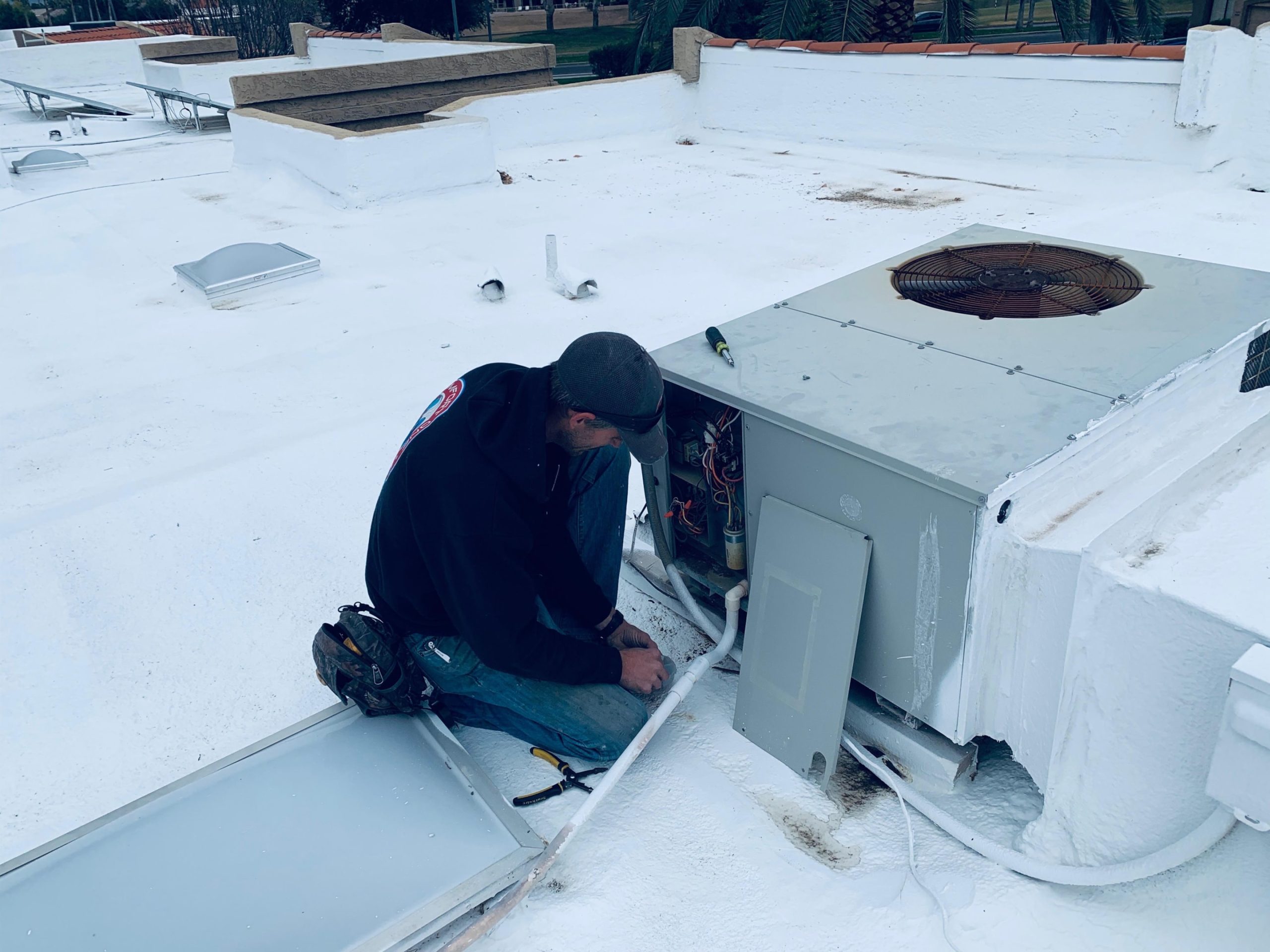
Why Your AC Suddenly Stops Working
Understanding the root causes behind air conditioning system failures, as well as issues within the overall HVAC system, helps you diagnose problems more effectively—especially when it comes to air conditioners and their common issues such as insufficient cooling, clogged filters, or improper sizing—and determine whether you’re dealing with a simple fix or a complex repair requiring professional attention.
Power Supply and Electrical Issues
The most frequent reason an air conditioner stops working involves electrical problems. Circuit breakers trip when your AC system draws too much power, especially during startup when the compressor and fan motor require high electrical current. Power outages, electrical storms, and overloaded circuits can cause these protective measures to activate, cutting power to your entire system. When this happens, always check the breaker box to see if a breaker has tripped and reset it as part of your troubleshooting process.
Loose electrical connections, particularly in outdoor units exposed to weather conditions, can interrupt power flow and prevent proper operation. These connections may corrode over time or become damaged by animals, debris, or severe weather.
Thermostat Malfunctions
Modern programmable thermostats control your entire air conditioning system, and when they malfunction, your AC won’t receive proper signals to start cooling cycles. The air conditioning unit relies on accurate thermostat signals to function correctly. Dead batteries are the most common culprit, causing blank displays or erratic temperature readings. Faulty temperature sensors can also prevent your thermostat from accurately detecting room temperature, causing your system to stop working even when set correctly.
Mechanical Component Failures
Your AC system relies on multiple mechanical components working in harmony, and each part is essential for the proper functioning of the AC unit. When critical parts fail, the entire system stops working:
-
Compressor failures prevent refrigerant circulation
-
Fan motor problems eliminate airflow through condenser coils or evaporator coils
-
Capacitor failures prevent motors from starting, often indicated by humming sounds without movement
-
Contactor relay issues interrupt electrical signals between components
Refrigerant Issues and Leaks
Low refrigerant levels from leaks cause poor cooling performance and can lead to frozen evaporator coils. Refrigerant absorbs heat by changing from a liquid to a gas inside the AC system; leaks disrupt this phase change, preventing proper heat transfer. When refrigerant leaks occur, your AC system cannot effectively transfer heat, causing ice formation on coils and refrigerant lines. This situation requires immediate attention, as continued operation can permanently damage the compressor.
Frozen Evaporator Coil Problems
A frozen evaporator coil typically results from restricted airflow or low refrigerant levels. A clogged filter is a frequent cause of restricted airflow, as are a clogged air filter or blocked vents, preventing proper air movement across the coils. When this happens, the coils become too cold and ice forms. This ice blocks further airflow, creating a cycle that stops your system from producing cold air.
Blocked Outdoor Condenser Unit
Your outdoor unit requires unrestricted airflow to expel heat from your house effectively. The outside unit should be kept clear of obstructions, with sufficient clearance around it to ensure optimal airflow and efficient operation. When debris, vegetation, or dirt accumulates around the condenser coils, heat transfer becomes inefficient. In extreme cases, complete blockage can cause your system to overheat and shut down automatically to prevent damage.
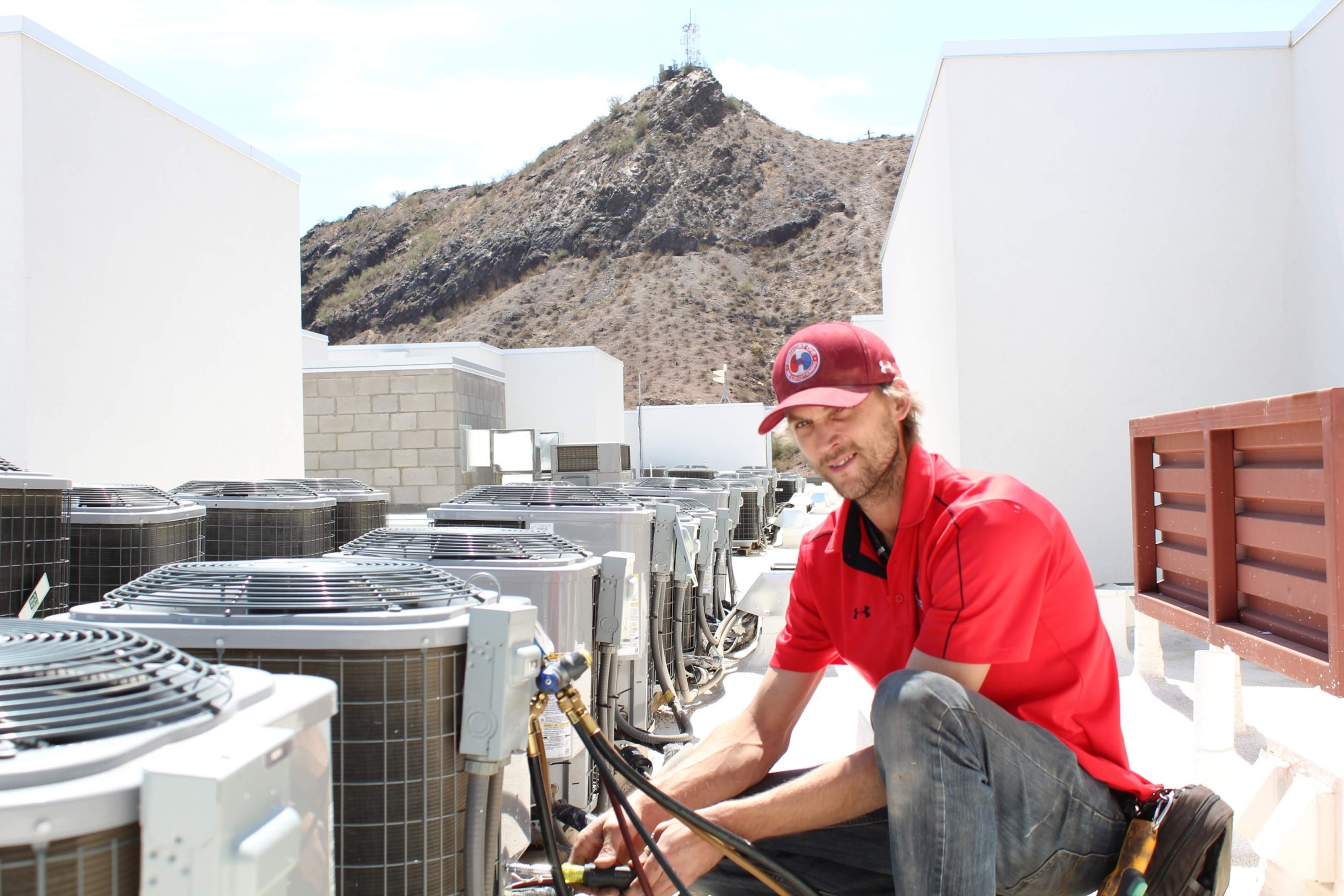
Immediate Troubleshooting Steps
When your AC stops working, follow these systematic troubleshooting steps before calling for professional help. These checks address the most common issues and can often restore your system to proper operation quickly.
Check Thermostat Settings
Start by verifying your thermostat is set to “cool” mode with the desired temperature at least 5 degrees below the current room temperature. Replace the batteries if your thermostat display appears dim or blank. Ensure all programming settings are correct, as power outages can sometimes reset programmable units to default settings.
Inspect Circuit Breaker Panel
Locate your AC system’s circuit breaker in your electrical panel. If the breaker has tripped, it will be in the middle position between “on” and “off.” Reset it by pushing it fully to the “off” position, then back to “on.” If the breaker trips repeatedly, stop attempting resets and contact an electrician, as this indicates a serious electrical problem.
Allow System Reset Time
After any power interruption, wait at least 30 minutes before restarting your air conditioning system. This waiting period allows the compressor’s internal pressure to equalize, preventing hard starting that can damage expensive components. Never attempt to restart your system immediately after a power outage.
Listen and Observe for Warning Signs
Use your senses to detect potential problems:
-
Listen for unusual noises like grinding, screeching, or clicking sounds
-
Look for ice formation on refrigerant lines or indoor units
-
Smell for burning odors or electrical smells around indoor and outdoor units
-
Feel for hot air coming from supply vents when the system should be cooling
Any of these warning signs indicate problems requiring immediate system shutdown and professional evaluation.
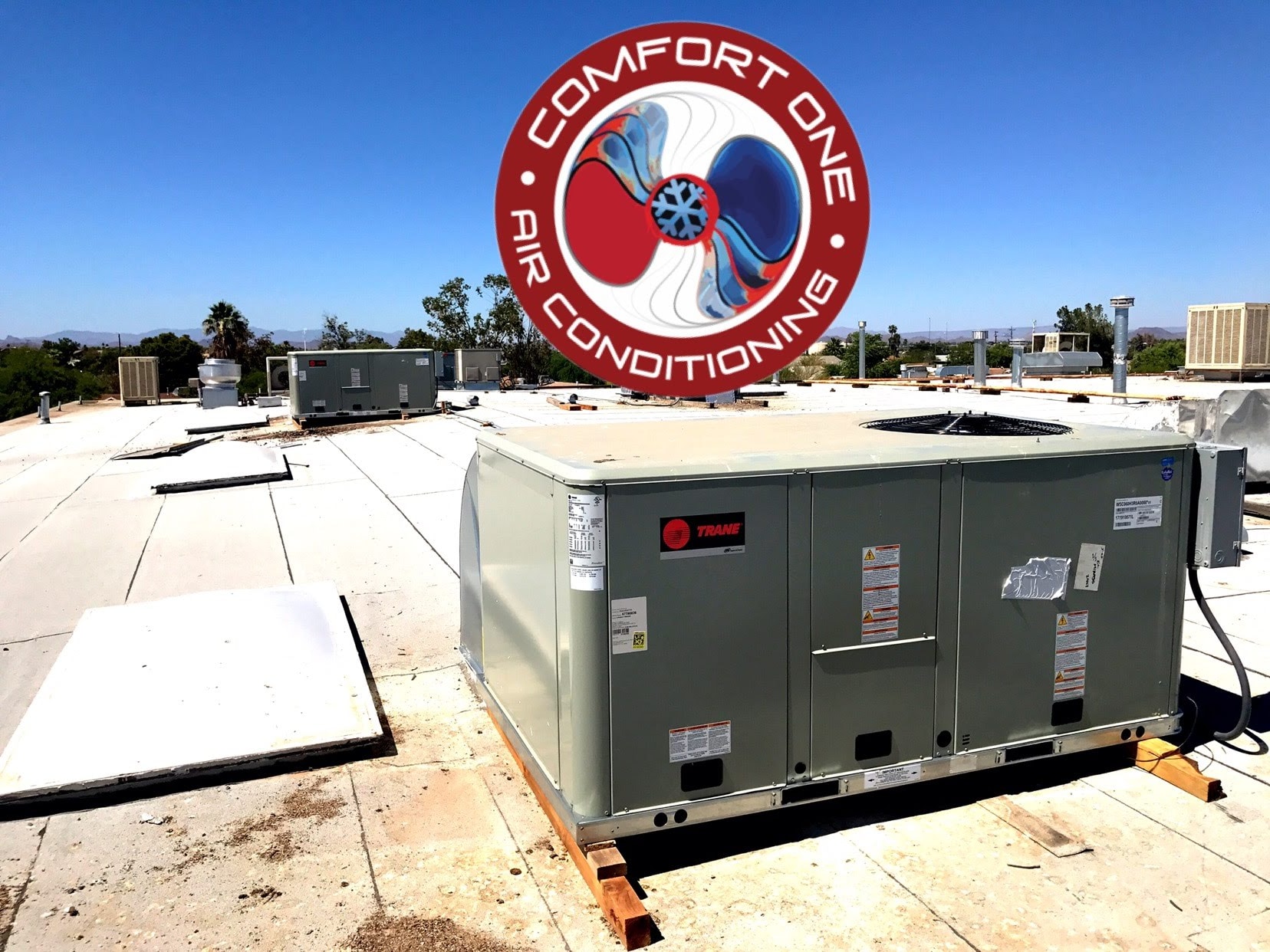
Common AC Problems You Can Fix Yourself
Several air conditioning issues fall within the scope of safe DIY repairs. For central air systems, maintaining clean and unobstructed ducts is essential for optimal performance and efficient cooling throughout your home. These fixes can restore your system to proper operation without requiring professional HVAC service.
Air Filter Replacement Guide
A dirty air filter is responsible for numerous AC problems and represents the easiest fix when your air conditioner stops working effectively.
Step-by-step filter replacement:
-
Turn off your AC system at the thermostat and circuit breaker
-
Locate the filter compartment in your indoor air handler or return air vent
-
Note the filter size printed on the frame and airflow direction arrow
-
Remove the old filter and dispose of it properly
-
Insert the new filter with the arrow pointing toward the air handler unit
-
Ensure the filter fits snugly without gaps around the edges
Filter replacement schedule:
-
Monthly during peak summer usage
-
Every 2-3 months during moderate use
-
More frequently with pets, allergies, or dusty conditions
-
Higher MERV-rated filters may require more frequent changes
Outdoor Unit Maintenance
Your outdoor condenser unit requires regular maintenance to function properly and prevent your AC from stopping work due to overheating.
Cleaning and clearance requirements:
-
Maintain 2-3 feet of clearance around all sides of the unit
-
Keep 5 feet of overhead clearance from trees, awnings, or structures
-
Remove debris weekly during spring and summer: leaves, grass clippings, dirt, and trash
-
Trim vegetation that grows too close to the unit
-
Check for animal nests or insect colonies that might block airflow
Safe condenser coil cleaning:
-
Turn off power to the unit at the disconnect switch
-
Remove the fan grill or top panel if accessible
-
Spray condenser coils gently with a garden hose on low pressure
-
Never use a pressure washer, which can damage delicate aluminum fins
-
Apply commercial coil cleaner following manufacturer instructions
-
Rinse thoroughly and allow to dry before restoring power
Indoor Vent and Airflow Optimization
Proper airflow throughout your house ensures your air conditioning system operates efficiently and prevents frozen evaporator coils. Maintaining optimal air flow by keeping vents clear of obstructions like dust, furniture, and debris is essential for peak cooling performance.
Vent maintenance checklist:
-
Remove furniture, rugs, or drapes blocking supply vents
-
Ensure all supply vents are open and unobstructed
-
Check return air grilles for accumulated dust and debris
-
Clean vent covers with soap and water monthly
-
Verify dampers in accessible ductwork are properly positioned
Condensate Drainage Maintenance
Clogged condensate drains can cause water damage and system shutdowns. A malfunctioning condensate pump can also result in water pooling and cause your AC to shut down. Basic drainage maintenance prevents these issues:
-
Locate the condensate drain line outside your house
-
Check for standing water or algae growth around the drain
-
Clear minor clogs using a wet/dry vacuum at the outside drain end
-
Flush the line with a 1:1 vinegar-water solution to prevent algae growth
-
Pour a cup of the solution down the drain monthly as preventive maintenance
GFCI Outlet Resets
Many outdoor condenser units connect through GFCI-protected outlets for safety. If your outdoor unit isn’t receiving power, check for tripped GFCI outlets:
-
Locate the GFCI outlet near your outdoor unit
-
Press the “test” button, then the “reset” button
-
Verify power restoration by checking for normal operation sounds
-
If the GFCI trips repeatedly, contact an electrician for evaluation
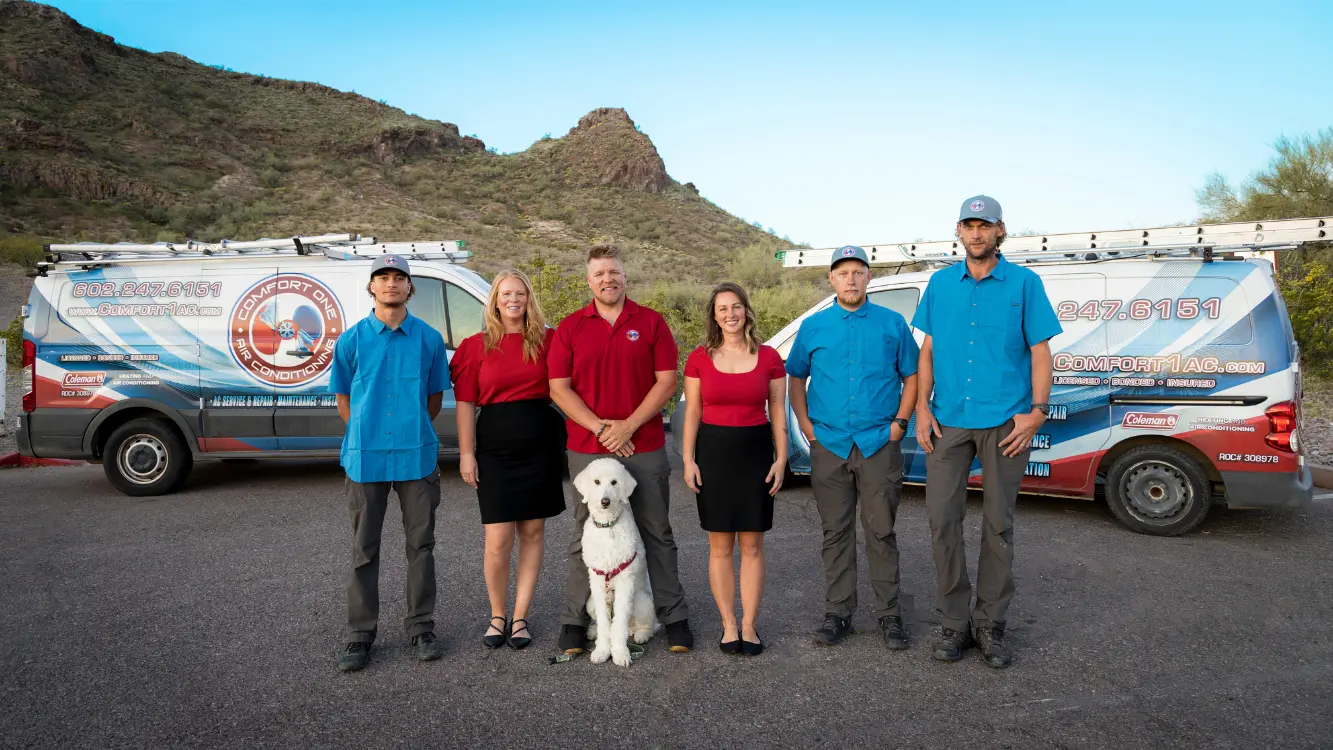
Signs You Need Professional AC Repair
Certain symptoms indicate problems beyond the scope of safe DIY repair. In combined HVAC systems, some issues can affect both cooling and heating functions. Recognizing these signs helps prevent further damage and ensures your safety.
Refrigerant Problems Requiring Professional Service
Ice formation indicators:
-
Frozen evaporator coil visible in indoor unit
-
Ice accumulation on refrigerant lines
-
Reduced cooling despite normal system operation
-
Water pooling around indoor unit from melting ice
Only EPA-certified technicians can legally handle refrigerant in air conditioning systems. Modern R-410A refrigerant operates at much higher pressures than older R-22 systems, requiring specialized equipment and training for safe handling.
Professional refrigerant services include:
-
Leak detection using electronic sensors
-
System pressure testing and evacuation
-
Proper refrigerant recovery and recharging
-
Component replacement for damaged parts
Electrical Component Failures
Capacitor problems often manifest as:
-
Outdoor or indoor fans humming without turning
-
AC compressor failing to start
-
Intermittent system operation
-
Burnt electrical smells from outdoor unit
Contactor relay failures cause:
-
No response when thermostat calls for cooling
-
Chattering or buzzing sounds from outdoor unit
-
Visible burn marks on electrical contacts
-
Complete system shutdown
Control board malfunctions result in:
-
Erratic system behavior
-
Failure to respond to thermostat commands
-
Error codes on digital displays
-
Random system cycling
Mechanical Component Issues
Compressor problems require immediate professional attention:
-
Hard starting with repeated attempts to engage
-
Loud banging or grinding noises during operation
-
Hot air blowing from supply vents
-
High electrical consumption without cooling
Blower motor failures present as:
-
No airflow from supply vents
-
Unusual squealing or grinding noises
-
Overheating and automatic system shutdowns
-
Burnt smells from indoor unit
When Burning Smells Indicate Danger
Electrical burning odors, visible smoke, or sparking sounds require immediate action:
-
Turn off your AC system immediately at the thermostat and circuit breaker
-
Evacuate the area if smoke is visible
-
Contact emergency services if fire is suspected
-
Call an HVAC professional for electrical system evaluation
Never ignore electrical smells, as they often indicate imminent fire hazards from overheated wiring, failed motors, or arcing electrical components.
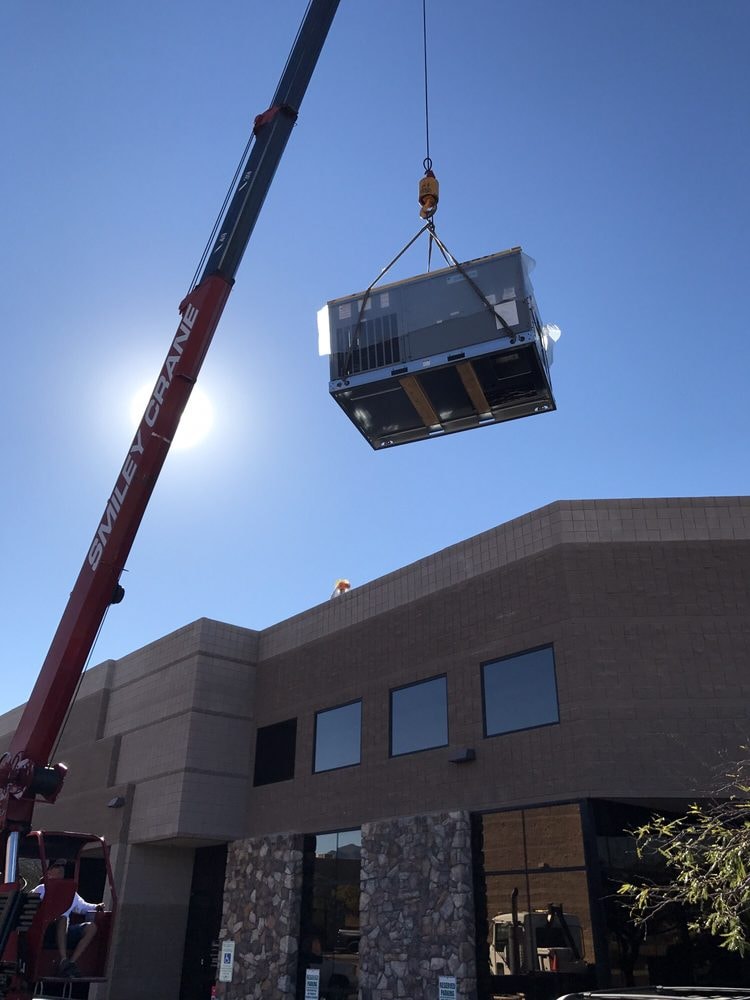
When to Replace vs Repair Your AC
Making the right decision between repairing and replacing your air conditioning system depends on several key factors including age, repair costs, and energy efficiency considerations.
Age and Efficiency Considerations
AC systems older than 12-15 years face several challenges:
-
Declining reliability with increased breakdown frequency
-
Reduced energy efficiency compared to modern units
-
Obsolete refrigerant types becoming expensive and scarce
-
Parts availability becoming limited for discontinued models
Energy efficiency improvements in modern AC systems provide significant benefits:
-
20-40% energy savings compared to units from the early 2000s
-
Advanced variable-speed technology for better comfort control
-
Smart thermostat compatibility for optimized operation
-
Improved humidity control and indoor air quality features
Cost Analysis Framework
Annual repair cost evaluation:
-
Repairs exceeding $500 annually suggest replacement consideration
-
Multiple service calls per year indicate declining system reliability
-
Emergency repairs during peak summer months cost significantly more
-
Preventive maintenance becomes less effective on aging systems
Major component replacement costs:
-
Compressor replacement: $1,500-$3,000
-
Evaporator coil replacement: $1,000-$2,500
-
Complete condenser unit: $2,000-$4,000
-
New complete system: $3,000-$7,000 depending on size and efficiency
Refrigerant Type Considerations
R-22 refrigerant phase-out impacts:
-
Production banned since January 2020
-
Existing supplies becoming increasingly expensive
-
Retrofitting to modern refrigerants often impractical
-
Leak repairs may cost more than system replacement
Modern R-410A systems offer:
-
Stable refrigerant pricing and availability
-
Better environmental compliance
-
Improved system efficiency and reliability
-
Manufacturer warranty protection

Preventing Future AC Breakdowns
Implementing a comprehensive preventive maintenance strategy significantly reduces the likelihood of unexpected AC failures and extends your system’s operational lifespan.
Professional Annual Maintenance
Comprehensive professional service includes:
-
Refrigerant pressure testing and adjustment
-
Electrical component inspection and testing
-
Thorough cleaning of evaporator and condenser coils
-
Lubrication of all moving parts
-
Airflow measurement and ductwork evaluation
-
Safety control testing and calibration
Optimal maintenance timing:
-
Schedule service in early spring before peak cooling season
-
Address minor issues before they become major failures
-
Update maintenance records for warranty compliance
-
Plan for potential repairs while weather is still moderate
Homeowner Maintenance Tasks
Monthly responsibilities:
-
Check and replace air filters as needed
-
Inspect outdoor unit for debris accumulation
-
Verify all supply and return vents remain unobstructed
-
Monitor energy bills for unusual increases indicating problems
Seasonal maintenance activities:
-
Clean outdoor condenser coils before summer heat arrives
-
Trim vegetation around outdoor unit to maintain proper clearance
-
Test system operation during mild weather to identify issues early
-
Inspect and clean condensate drainage systems
Monitoring System Performance
Early warning signs to watch for:
-
Gradually increasing energy bills without usage changes
-
Longer cooling cycles to reach desired temperature
-
Uneven cooling between different areas of your house
-
Unusual noises developing during system operation
-
More frequent need for air filter replacement
Smart home integration benefits:
-
Programmable thermostats reduce system strain through optimized scheduling
-
Smart sensors detect airflow problems and component failures early
-
Energy monitoring helps identify declining efficiency trends
-
Remote diagnostics can alert professionals to developing problems
Documentation and Record Keeping
Maintenance record importance:
-
Track service dates and work performed
-
Monitor repair frequency and costs over time
-
Maintain warranty compliance documentation
-
Facilitate informed repair vs replacement decisions
Information to record:
-
Filter change dates and types used
-
Professional service visits and findings
-
Unusual system behavior or performance changes
-
Energy consumption patterns and billing trends
Emergency AC Repair Safety Tips
When your air conditioner stops working unexpectedly, following proper safety protocols protects both you and your equipment while ensuring effective troubleshooting.
These same troubleshooting and safety principles also apply to car air conditioning systems. For vehicle AC issues, professional diagnosis and repair are recommended to keep your car comfortable and safe to drive.
Electrical Safety Protocols
Before attempting any troubleshooting:
-
Turn off power at the circuit breaker, not just the thermostat
-
Wait for all moving parts to stop completely before inspection
-
Never touch electrical components with wet hands
-
Use insulated tools when working near electrical connections
-
Avoid working during storms or wet conditions
Recognizing electrical hazards:
-
Burnt smells indicating overheated wiring or components
-
Sparking or arcing sounds from electrical panels or units
-
GFCI outlets that trip repeatedly
-
Visible scorch marks on electrical components
-
Tingling sensations when touching metal parts
Refrigerant Handling Warnings
Never attempt DIY refrigerant work:
-
Refrigerant leaks can cause frostbite injuries
-
Improper handling violates EPA regulations
-
DIY recharge kits often damage expensive components
-
Mixing different refrigerant types destroys systems
-
Only licensed technicians can legally purchase proper refrigerants
Signs requiring immediate professional help:
-
Hissing sounds indicating active refrigerant leaks
-
Ice formation anywhere on the system
-
Sweet or chemical odors around indoor or outdoor units
-
Oil stains around refrigerant connections
Emergency Response Planning
Prepare for extreme heat scenarios:
-
Identify air-conditioned public spaces for temporary relief
-
Maintain battery-powered fans for basic air circulation
-
Keep contact information for emergency HVAC services readily available
-
Have a plan for vulnerable family members during extended outages
When to call emergency services:
-
Visible smoke or flames from any part of your AC system
-
Strong electrical burning smells throughout your house
-
Carbon monoxide detector alarms (with heat pump systems using gas backup)
-
Electrical sparking or popping sounds
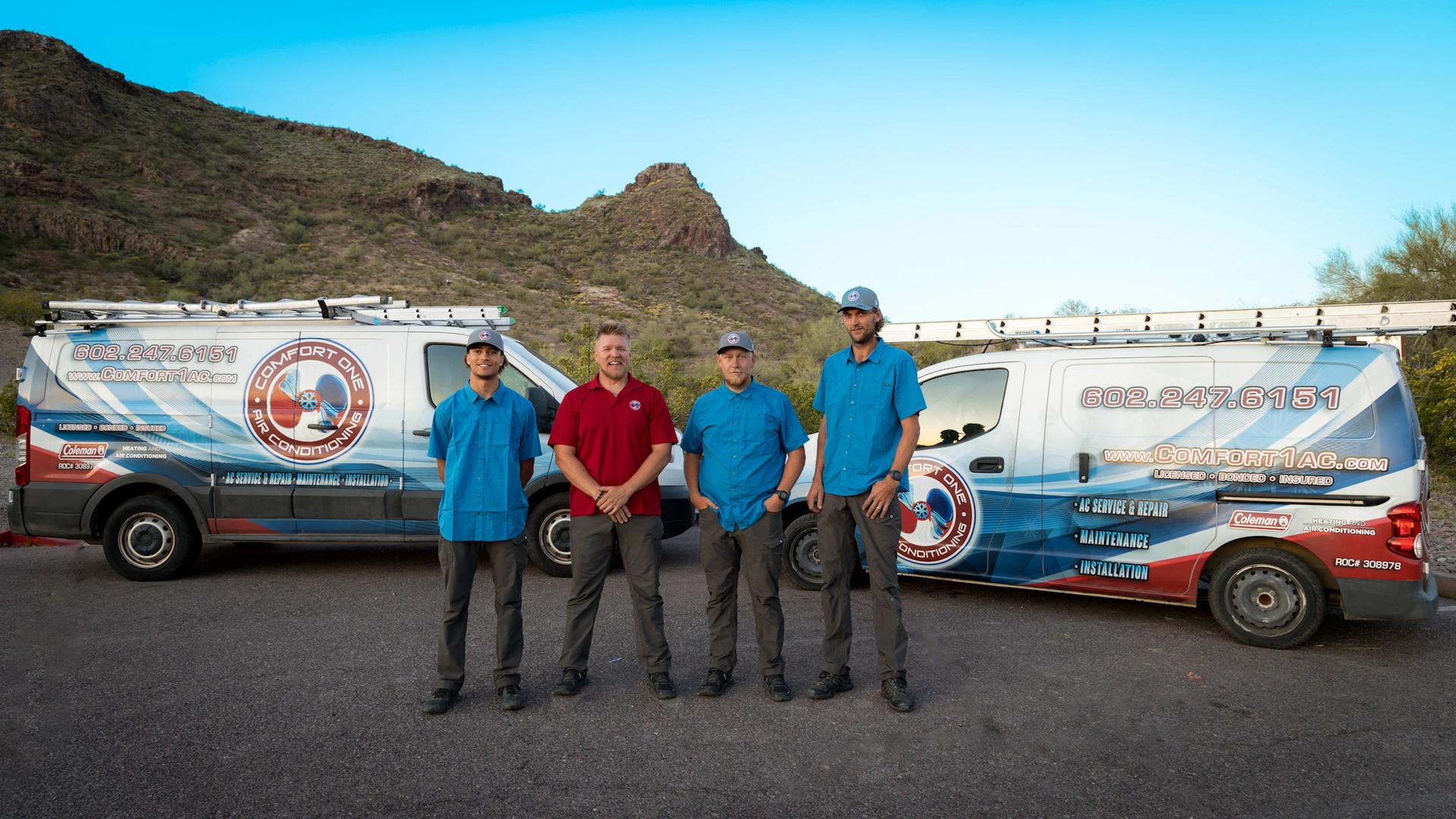
Comfort One Air Conditioning LLC: Your Professional HVAC Partner
When your AC stops working and requires professional intervention, choosing the right HVAC contractor ensures quality repairs and reliable service. Comfort One Air Conditioning LLC stands as a trusted leader in residential and light commercial air conditioning solutions, serving customers with comprehensive HVAC services designed to restore comfort quickly and prevent future breakdowns.
Professional Expertise and Certifications
EPA-Certified Technicians: All Comfort One Air Conditioning LLC technicians maintain current EPA certification for refrigerant handling, ensuring legal compliance and safe service practices. This certification demonstrates their expertise in working with both legacy R-22 systems and modern R-410A air conditioning systems.
Comprehensive Training Standards: The company emphasizes continuous education for all service technicians, keeping them current with the latest HVAC technology, diagnostic equipment, and manufacturer service procedures. This commitment to professional development ensures customers receive knowledgeable service regardless of their system type or age.
Licensed and Insured Operations: Comfort One Air Conditioning LLC maintains all required state and local licensing, providing customers with confidence in their service quality and legal compliance. Full insurance coverage protects both customers and technicians during all service visits.
Complete HVAC Service Offerings
Emergency Repair Services: Understanding that air conditioning failures often occur during the most critical times, Comfort One Air Conditioning LLC provides 24/7 emergency response for urgent cooling system problems. Their rapid response capability minimizes discomfort during extreme weather conditions.
Preventive Maintenance Programs: Annual maintenance programs help prevent the majority of AC breakdowns while extending system lifespan and maintaining manufacturer warranty compliance. These comprehensive inspections address potential problems before they cause expensive failures.
System Installation and Replacement: When repair costs exceed practical limits, Comfort One Air Conditioning LLC provides expert guidance on system replacement options, helping customers choose efficient units that match their cooling needs and budget constraints.
Indoor Air Quality Solutions: Beyond basic cooling, the company offers comprehensive indoor air quality improvements including advanced filtration systems, humidity control, and air purification technology to enhance home comfort and health.
Customer-Focused Service Philosophy
Transparent Pricing: Comfort One Air Conditioning LLC believes in upfront, honest pricing without hidden fees or surprise charges. Customers receive detailed estimates explaining all work to be performed and associated costs before any repair work begins.
Educational Approach: Rather than simply fixing immediate problems, technicians take time to educate customers about their systems, explaining maintenance requirements and providing tips to prevent future issues. This educational approach empowers homeowners to better care for their air conditioning systems.
Quality Guarantee: All work performed by Comfort One Air Conditioning LLC comes with comprehensive warranties covering both parts and labor, providing customers with confidence in their service investment.
Specialized System Support
Legacy System Expertise: With extensive experience servicing older R-22 systems, Comfort One Air Conditioning LLC can provide cost-effective solutions for aging equipment while helping customers plan for eventual system upgrades.
High-Efficiency System Installation: The company specializes in high-efficiency air conditioning systems that provide significant energy savings, often qualifying for utility rebates and tax incentives that offset installation costs.
Smart Home Integration: Comfort One Air Conditioning LLC stays current with smart thermostat technology and home automation integration, helping customers optimize their cooling systems for maximum efficiency and convenience.
When your air conditioner stops working and DIY troubleshooting doesn’t resolve the problem, Comfort One Air Conditioning LLC provides the professional expertise needed to restore your comfort quickly and reliably. Their combination of technical knowledge, customer service excellence, and comprehensive HVAC solutions makes them the ideal choice for all your air conditioning needs.
Frequently Asked Questions
Why did my AC stop working suddenly?
The most common causes when an air conditioner suddenly stops working include tripped circuit breakers, dirty air filters, thermostat malfunctions, or refrigerant leaks. Power supply issues account for approximately 30% of sudden AC failures, while airflow restrictions from clogged filters cause another 25% of cooling system breakdowns. Professional diagnosis is often necessary to identify less obvious problems like refrigerant leaks or mechanical component failures.
How long should I wait before calling a technician?
Try basic troubleshooting steps for about 30 minutes, including checking thermostat settings, replacing air filters, and resetting circuit breakers. However, call an HVAC professional immediately if you notice burning smells, electrical sparking, continuous operation without cooling, or ice formation on your system. These symptoms indicate potentially dangerous conditions or problems that can cause expensive damage if not addressed promptly.
Can I restart my AC after a power outage?
Yes, but wait at least 30 minutes after power restoration before restarting your air conditioning system. This waiting period allows the compressor’s internal pressure to equalize, preventing hard starting that can damage the compressor. Check your circuit breaker panel to ensure AC breakers haven’t tripped during the outage, and verify your thermostat settings before attempting to restart the system.
What’s the average cost of AC repairs in 2024?
Minor AC repairs like thermostat replacement, capacitor changes, or filter-related issues typically range from $150-$500. Major component repairs including compressor replacement, evaporator coil repairs, or extensive electrical work can cost $1,000-$3,000. Refrigerant leak detection and repair often falls in the $300-$800 range, depending on the leak location and system type. Emergency service calls during peak summer months may include additional charges.
How often should I replace my air filter?
Replace your air filter monthly during peak cooling season when your AC runs frequently. During moderate weather, every 2-3 months is typically sufficient for most households. Homes with pets, allergies, or dusty conditions may require monthly filter changes year-round. Higher MERV-rated filters provide better air quality but may need more frequent replacement due to their denser construction restricting airflow more quickly.
Is it normal for my AC to run constantly?
No, continuous operation indicates underlying problems requiring professional evaluation. Properly sized air conditioning systems should cycle on and off to maintain your desired temperature. Constant running often signals refrigerant leaks, undersized equipment, significant ductwork leaks, or mechanical failures preventing normal cycling. An HVAC technician can diagnose the specific cause and recommend appropriate repairs.
What should I do if my AC blows hot air?
When your air conditioner blows hot air instead of cool air, first check your thermostat settings and replace your air filter. If these basic steps don’t resolve the issue, the problem likely involves refrigerant leaks, compressor failure, or electrical issues requiring professional repair. Continuing to operate an AC system blowing hot air can damage expensive components, so schedule professional service promptly.
Can dirty coils cause my AC to stop working?
Yes, both dirty evaporator coils and condenser coils can cause your air conditioning system to stop working effectively. Dirty coils reduce heat transfer efficiency, causing your system to work harder and potentially overheat. Severely dirty coils can trigger safety shutdowns to prevent compressor damage. Regular professional cleaning and basic homeowner maintenance help prevent coil-related failures.
How do I know if my AC needs refrigerant?
Signs of low refrigerant include reduced cooling performance, ice formation on evaporator coils or refrigerant lines, longer cooling cycles, and higher energy bills. Only EPA-certified technicians can legally add refrigerant to air conditioning systems. If you suspect refrigerant issues, schedule professional service immediately, as continued operation with low refrigerant can destroy your compressor.
Should I cover my outdoor unit when not in use?
Generally, no – outdoor condenser units are designed to withstand weather conditions year-round. Covering units can trap moisture and create environments for mold growth or pest infestations. Instead, focus on keeping the area around your outdoor unit clear of debris and vegetation. If you’re concerned about protection during extreme weather, consult with an HVAC professional about appropriate protective measures.
When your AC stops working, quick action combined with knowledge about your air conditioning system can often restore comfort rapidly. While many issues require professional expertise, understanding the troubleshooting process and recognizing warning signs helps you make informed decisions about repairs versus replacement. Regular maintenance remains the most effective strategy for preventing unexpected breakdowns and ensuring reliable cooling when you need it most.
For professional AC repair and maintenance services, contact Comfort One Air Conditioning LLC to schedule service with EPA-certified technicians who provide transparent pricing and comprehensive solutions for all your air conditioning needs.
Author
-

Tapani Ojalehto is a RSI-top tech with over 15 years of experience in the HVAC industry. Tapani Ojalehto is the owner and founder of Comfort One Air Conditioning LLC, a HVAC company in Scottsdale, Arizona. Tapani enjoys hockey, archery, hunting, fishing and everything outdoors. He loves quality time with his wife Jessica of 15 years and their pup Loki Bear.
View all posts


